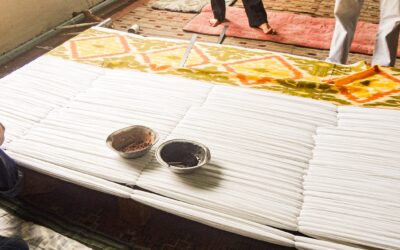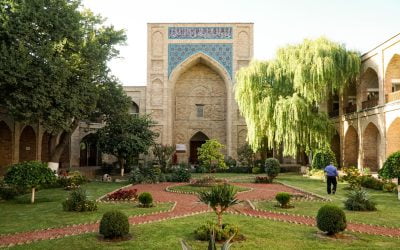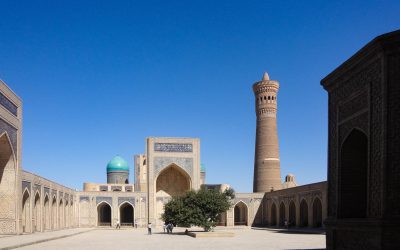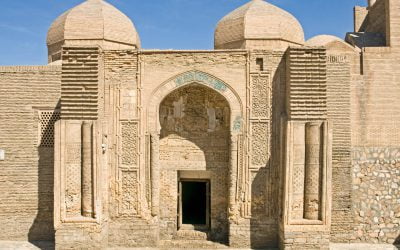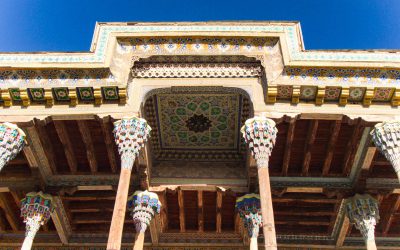THE ARK FORTRESS
The Ark Fortress is situated on Afrosiab Street on the western edge of the Old City of Bukhara.
HERITAGE SITE | THE ARK FORTRESS
- The Ark Fortress, a royal town-within-a-town, is Bukhara’s oldest structure and was home to the rulers of Bukhara for over a millenium. The Ark is as old as Bukhara itself. It is believed to have first been built in the 5th century upon an artificial hill.
- The Muslims after conquering the city, built the first ever Bukharan Musjid here in 713CE on the smouldering ashes of a Zoroastrian temple, to assert physically and metaphorically the power of Islam over other faiths and their adherents. Samanids and Karakhanids fortified it from the 9th to the 12th centuries with a series of ramparts, the Karakhitai and Khorezmshah destroyed and rebuilt it three times between them and finally, and indeed rather predictably, the Mongols pulverized it in 1220.
- The Ark finally began to take its present form in the 16th century under the Uzbek Shaybanids and all its present buildings date from the last three centuries. By this time, the Ark had grown to house not only the emir, his family and retinue, but also the whole range of government accessories, in a complex of over 3,000 inhabitants providing a palace, harem, throne room, reception hall, office block, treasury, Musjid, gold mint, dungeon and slave quarters.
- It is mentioned that the Ark had a unique library that attracted scholars from far and wide. Some of the most well-known scholars and writers, such as Ferdowsi, Al-Farabi (Alpharabius), Ibn Sina (Avicenna) and Omar Khayyam had all lived and worked in the fortress at some stage during their lives.
- Approximately 80% of the Ark was destroyed in September 1920 by merciless Bolshevik bombardment that left the buildings in ruins. Much of it has since been restored and ongoing renovations are bringing back to life the other sections.
- The rooms of the palace, whether those belonging to the emir, harem or guards, have since been transformed into different museums focusing on different eras of Bukharan history.


